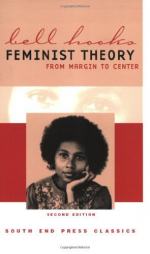
|
| Name: _________________________ | Period: ___________________ |
This quiz consists of 5 multiple choice and 5 short answer questions through Chapters 4 and 5.
Multiple Choice Questions
1. According to the author, challenges to to sisterhood can exist between white women and women of color; between which other groups does she say that they can exist?
(a) Challenges to sisterhood do not really occur between other groups of women.
(b) Between women from different universities.
(c) Only between women from different social classes.
(d) Between different groups of non-white women, women of different classes and/or races/ethnicities, and women of different sexual orientations.
2. What can happen to women in light of the social views about their gender?
(a) Women can simply imitate men and these views will not affect them.
(b) Women can absorb these views and manifest them in their lives in negative ways.
(c) There is no proof that social attitudes affect individual choices.
(d) Nothing happens to women; they are not influenced by social attitudes.
3. The phrase "the problem that has no name" refers to which of the following issues?
(a) Women and schizophrenia.
(b) Women's fears of aging.
(c) Hating one's family.
(d) The psychological malaise of all women in American society due to gender roles.
4. What is the primary "point of contact" between the oppressor and the oppressed?
(a) The work environment.
(b) Marriage.
(c) Absence of choices.
(d) There is very little actual contact.
5. How does the author support her claims about the reception of black women's efforts in the early feminist movement?
(a) She cites anecdotal evidence based on personal experience.
(b) She does not support her claims with evidence.
(c) She presents statistical research.
(d) She presents a series of interviews that she conducted.
Short Answer Questions
1. Why does the author spend time talking about the relationship between feminism and the family?
2. According to the author's Preface (2000), where is visionary feminist discourse increasingly talked about?
3. What must be learned in order for the feminist movement to be successful?
4. In the title of Chapter Five, what term is used to describe men's relationship to the feminist movement.
5. According to the author, how has the relationship between feminism and the family often been portrayed?
|
This section contains 482 words (approx. 2 pages at 300 words per page) |

|




